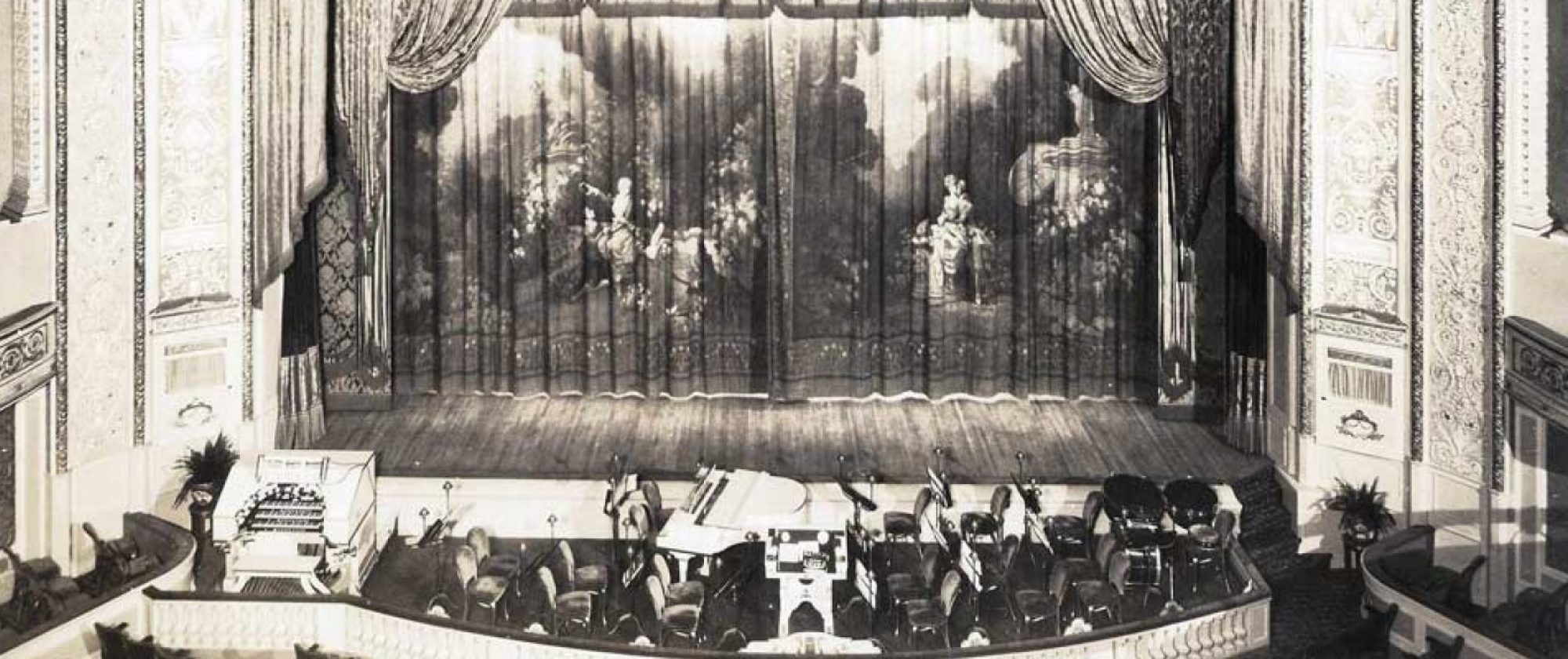Mlle Nana, scheduled to start the evening’s entertainment, failed to appear and was replaced by Bohn and Bohn, a man and woman, applying a hand-to-hand routine that sufficed for them, while playing the smaller houses recently, and which allowed them to pass nicely as an initial bit. Only doing six minutes, the couple did no stalling and made a few twists, by the girl, stand out.
“La Petite Revuette of Successes, Past and Present.: Toby Claude, lately returned from England, deserves much credit for having quite an original vehicle. During Toby’s stay in England, every idea gone before had been utilized by every short revue produced there. Toby, however, has gone them one better in this way and put something new over. William Smythe, who plays in the act, produced it/ The turn opens in real Parisian Revue style, with the Compere and Commere seated at a restaurant table, the Compere telling his companion about a certain actress he has seen in different productions in various parts of the world. As he describes the star in “The Belle of New York,” he and his companion are put in darkness and Toby and Smythe come out from a back-drop and sing the “When We Are Married” number from that show. In the same way songs are introduced from “The Chinese Honeymoon,” Folies Bergere, Paris, and from the Palace, London. After this the Compere and the Commere leave the stage and enter one of the boxes in the front of the house. Miss Claude and Smythe finish the act with “Tipperary.” Little Toby Claude has picked a very useful vehicle besides a clever helper in William Smythe. The rest of the company help.
7 Mins.; Full Stage (Special Drop). Opening the show a man and a woman show something new and neat in a cycling act. Single wheels, both high and low, are used, the man riding as sort of an understander. He displays extraordinary skill in balancing. The neatness and good looks of both make the turn a dandy opening one of any bill.
Davis and Pelle held about half the house in with a flashy routine of lifts, hand-to-hand and acrobatics. The men make a neat appearance in tights and athletic shirts, the understander showing a remarkable physique that is upheld by the strength of his one arm elevations of the top mounter. It’s a dandy turn for either end of the bill.
Handers and Mellis (New Acts) were pinch hitting for Rome and Gaut, off the bill. The boys landed safely and were followed by Beth Beri, the graceful California girl, assisted by Jay Velie and Paul O’Neill. The act is standard dancing turn and can follow any of the steppers. Miss Beri is a shapely, wholesome looking girl who reaches near contortions in some of her bends, and the two boys are clever hoofers. One of the males is a clever pianist and vocalist as well. They scored easily.
O’Donnell and Blair, No. 3, made them yell with the rough, low comedy sketch, “The Piano Tuner.” Some of O’Donnell’s falls look dangerous, the finish, rocking astride a tall ladder mounted on top if the piano, making the audience gasp when they weren’t yelling with each teeter. The ultimate collapse was a howl and they were soundly applauded.
Miss Marbe, on ahead of Baker, landed safely through her dancing wardrobe and appearance. She exhibits about as shapely a pair of Frankie Baileys as have been seen off the Amsterdam Roof. Two stunning costume creations, with sheer fishnet stockings, had the women buzzing and the undivided attention of the males. Miss Marbe is a graceful dancer of the high kicking variety, and while her voice isn’t a grand opera caliber, she registers her songs nevertheless through personality and intelligent delivery.
Baker did a lot of ad libbing with Benny Roberts. Everything he tried landed solidly. He has a new trick of repeating any gag the gang muffs and works it up for laughs. The plant in the box helps out at the finish, but Baker can dispense with him at any time, for he is in safety before the “stooge” butts in. He followed Fay Marbe and got a laugh on his entrance by pulling a few cracks about Miss Marbe’s physical assets, following it up with the remark, “It looks like a good week.”
Jimmy Fallon and Marjorie Shirley kicked the show into high again in the fourth notch. The act has improved muchly since its metropolitan premiere and is now strong enough for any of the bills. Fallon is a good comic of the “nut” type, and his Bert Gibbons imitation remains a faithful reproduction. Miss Shirley makes an excellent foil and also handles a comedy solo song and a bit of stepping that help. She looks fetching in a black lacy dress. They established themselves early.
Laura and Billy Dreyer opened mildly with their double dancing turn and were followed by El Cota, who started things off, deucing it with pip of a routine of popular and near classical xylophone selections. With horn-rimmed cheaters and a sanctimonious expression this musician hits the proper note with his delivery. He refuses to take his work seriously and gets greater results thereby. Comedy touches were added by a sign easel with blank cards and one or two comedy ones. He made a decided impression.
